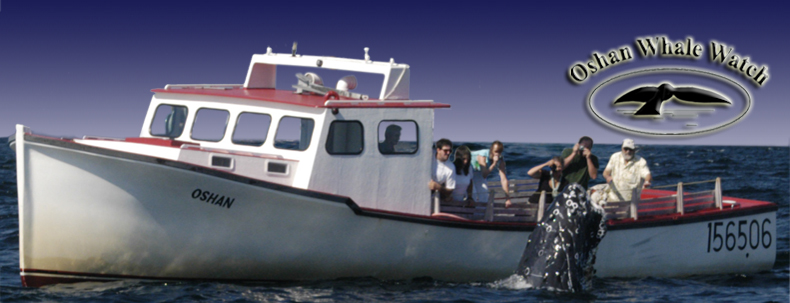Sunfish and Basking Sharks Sighted on Whale Watching Tours
In addition to baleen whales, the waters outside Bay St. Lawrence form the ideal habitat for migrating sunfish and basking sharks. The shelter provided by Cape North to the east and Cape St. Lawrence to the west corrals the water into St. Lawrence's Bay, which mixes with mineral rich water from the numerous rivers and waterfalls in the area, and creates an ideal breeding ground for plankton. Because of this plankton rich water, jellyfish and krill come into St. Lawrence's Bay to feed, while the whales, seabirds, dolphins, sunfish and basking sharks quickly follow.
Because sunfish and basking sharks do not travel in pods (groups) they hard to spot, but they are fun to watch and are a photographic challenge. Naturally, while whale watching we take the time to enjoy these magnificent creatures. In fact, if we spot a sunfish or a basking shark, it usually means that whale pods are close by.
Sunfish
- Size: Roughly 4.9 ft/1.8 m to 10.8/3.3 m
- Frequency: Most sightings happens after mid-June
- Sightings: Difficult to spot, as it surfaces quickly: we look for single fin (left)
- Feeding: mainly jellyfish
- "Prehistoric" looking, "flat fish" style shape.

Basking Sharks
- Size: Roughly 20 ft/6m - 26 ft/8m Long
- Migratory: sighted in July and August
- Sightings: Difficult to spot, but worth it when we do.
- Feeding: mainly krill and plankton, similar to a baleen whale

